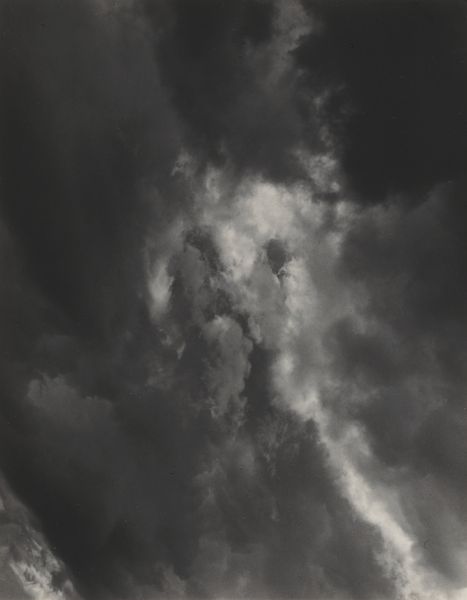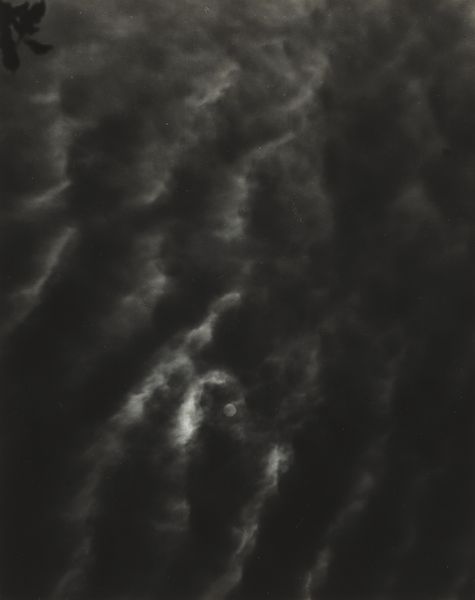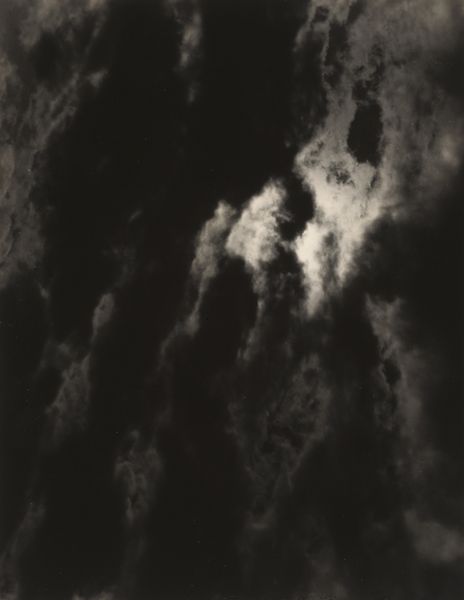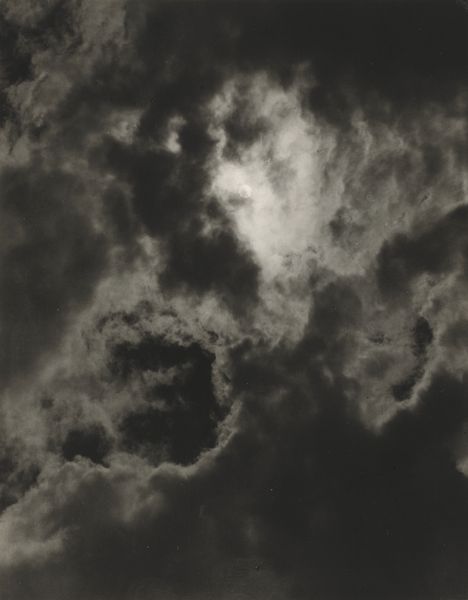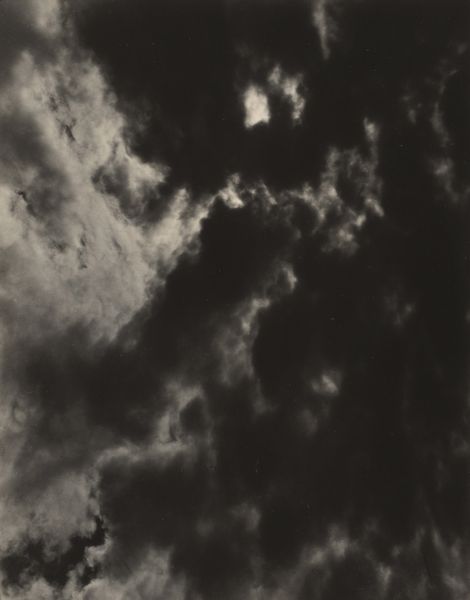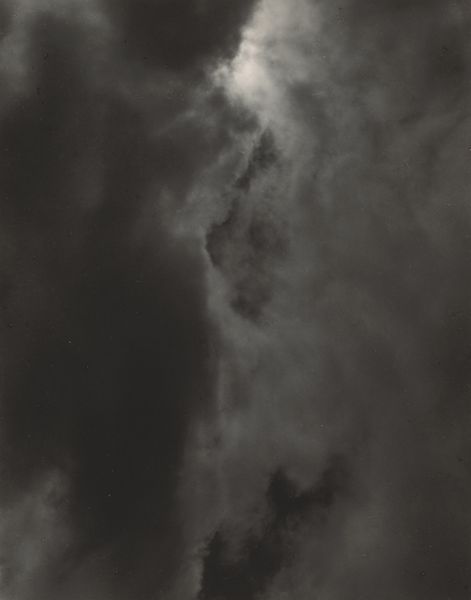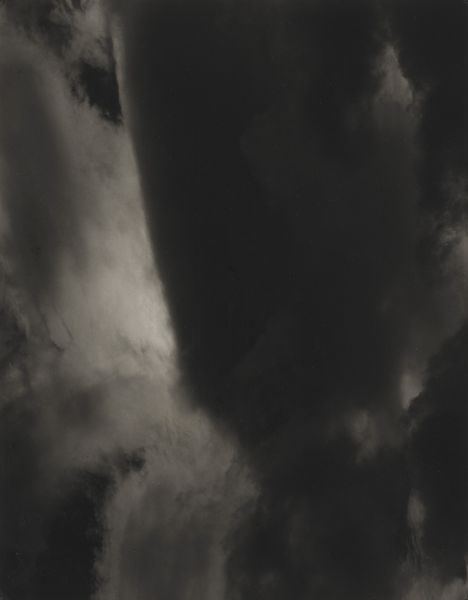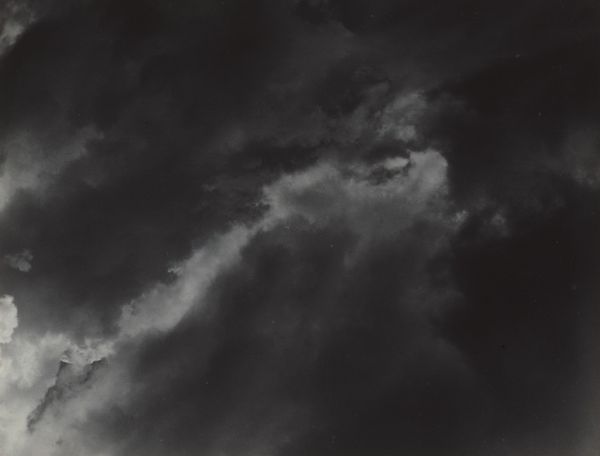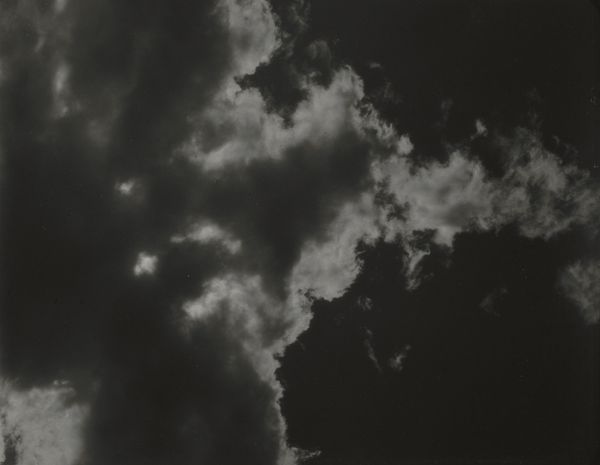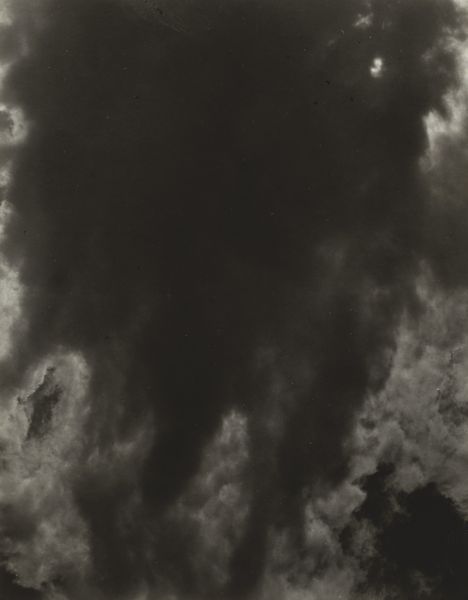
Dimensions: sheet (trimmed to image): 11.8 × 9.2 cm (4 5/8 × 3 5/8 in.) mount: 34.4 x 26.8 cm (13 9/16 x 10 9/16 in.)
Copyright: National Gallery of Art: CC0 1.0
Curator: We're now viewing "Equivalent, Set C2 No. 4", a gelatin-silver print crafted in 1929 by Alfred Stieglitz. Editor: Wow, it's basically a study in grey. You know, seeing just those swirling forms, they look more like thoughts congealing than any kind of sky I've ever known. A dark brooding mass and then… a sudden illumination in the middle! Curator: Stieglitz was deeply involved in questioning photography's place within the art world, emphasizing its potential beyond mere representation. His "Equivalents" series are about translating inner states into visual form through photography. This focus is interesting because, despite its visual connection with the physical sky, the finished artwork, which involved careful darkroom practice, became totally disconnected with such indexical purpose. Editor: Totally, he's wrestling with something big, a silent battle playing out on photographic paper. You know I keep expecting them to shift, morph, like those old magic eye puzzles, waiting for another image to show up if I stare long enough. Does that ever happen? Does a different work come up with prolonged staring? Curator: The abstract, almost meditative quality points toward a break from the documentary. It's interesting how the rise of skyscrapers was shifting art’s eye towards sky viewing! This particular silver gelatin print involves a meticulous chemical process… a lot of hands involved there. It also raises the economic question around accessibility since photography democratized the image. Editor: I love the way the light battles its way through, as though the clouds were reluctant to let it pass. All that tonal drama happening on film! How could the man be more interested in manufacture than feeling?! Although of course the making is linked inextricably to his emotionality, and his time’s. And ours now as we stare. Curator: Right! This photograph’s layered tones achieved through Stieglitz's mastery is, I think, not really possible today through digital processing as a totally unique result happened there and then by those individuals working there! That is part of its unrepeatable material reality. Editor: Thinking about it, it feels fitting that the great photographer ended his days gazing upward. What better subject for a restless eye, always seeking new perspectives? Curator: Indeed, Alfred Stieglitz showed that clouds can be more than clouds; they become reflections of human experience shaped through complex industrial material and cultural practice.
Comments
No comments
Be the first to comment and join the conversation on the ultimate creative platform.
